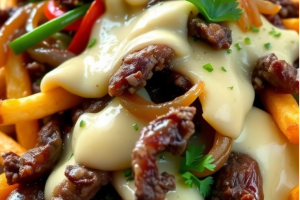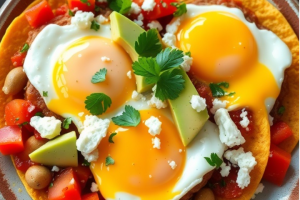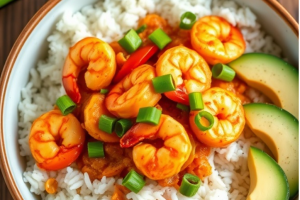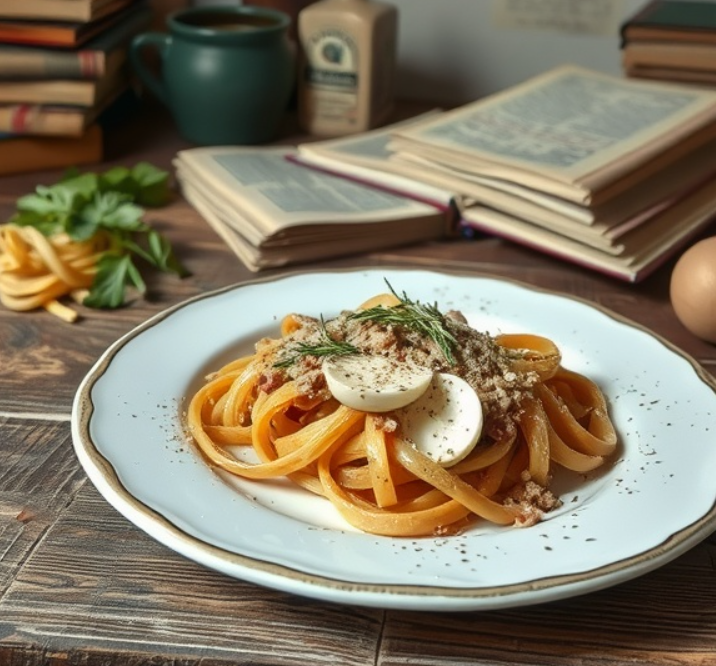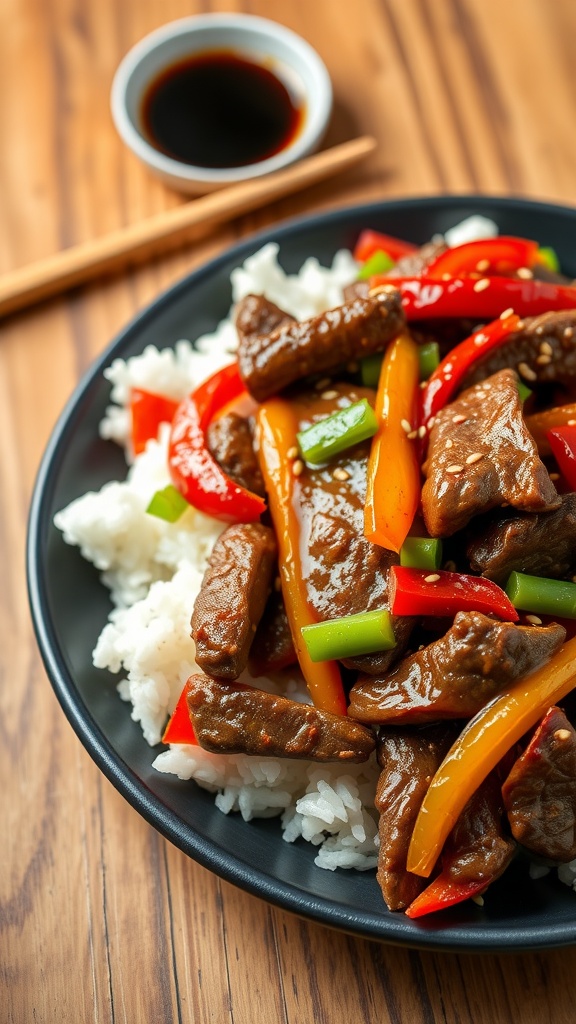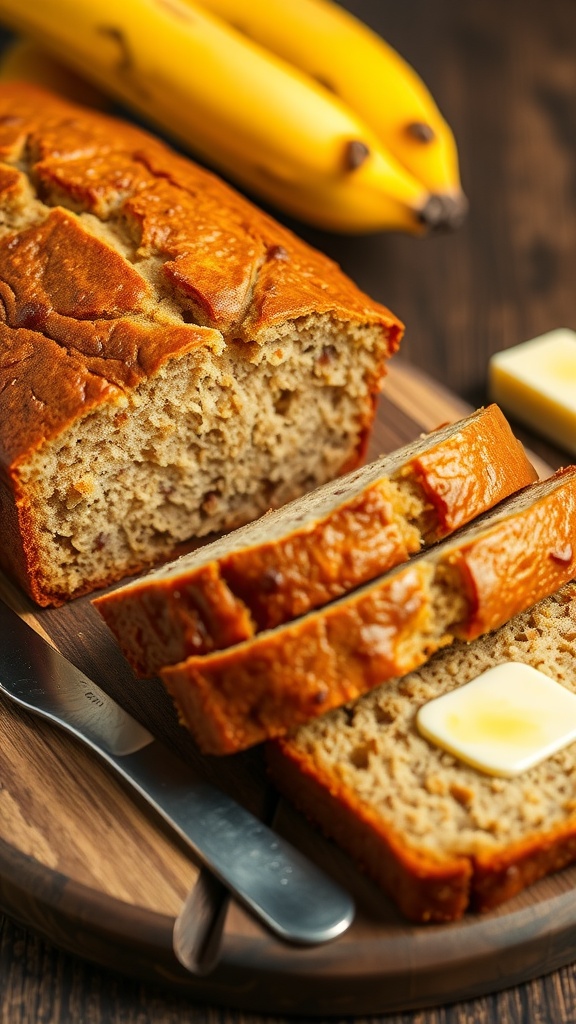“Lost in Italy, Found in a Plate of Carbonara” takes you on a delicious journey through the streets of Italy, where a simple plate of carbonara becomes a symbol of connection. It’s a story of flavor, nostalgia, and the unexpected moments that lead to discovering not just great food, but also a sense of belonging. Join in on the fun as we explore how a classic dish can bring people together in the most delightful ways.
Regional Variations of Carbonara Across Italy
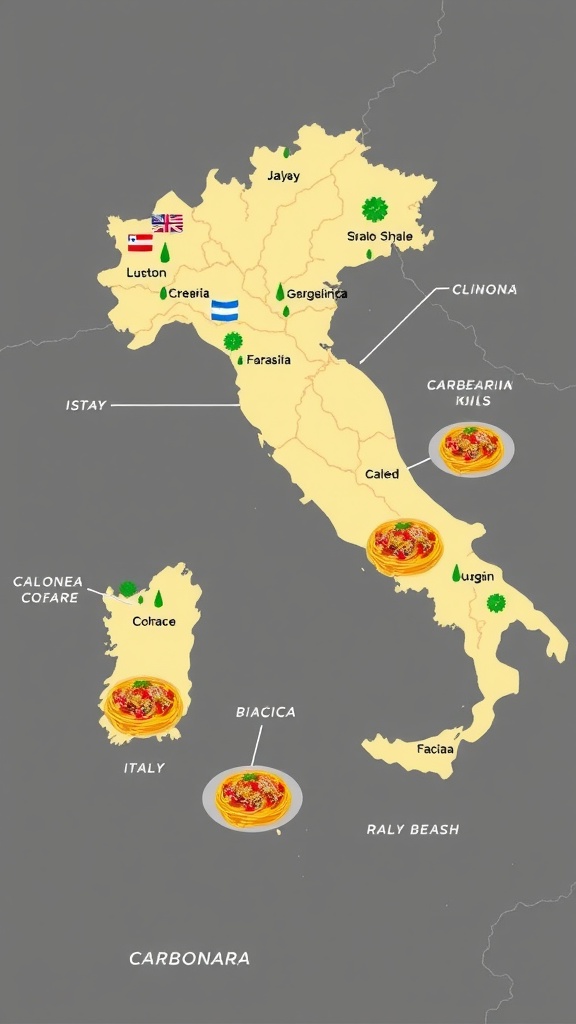
Carbonara is a beloved Italian dish, and its variations across the country are as diverse as the regions themselves. The image shows a map of Italy, highlighting different locations where unique takes on carbonara can be found. Each spot has its own twist on this classic recipe, influenced by local ingredients and traditions.
In places like Biacica, you might find added spices that give the dish a kick. In contrast, the coastal regions may incorporate fresh seafood, creating a lighter version. Each variation tells a story of the local culture and the flavors that define it.
The ingredients generally remain similar: pasta, eggs, cheese, and cured pork. Yet, depending on the region, chefs might substitute guanciale with pancetta or even introduce vegetables for a personal touch. The magic of carbonara lies in these differences, making every plate a new experience.
So, if you ever find yourself wandering through Italy, don’t miss the chance to sample the regional carbonara. Each plate is a delicious reminder of how food connects people to their heritage and traditions.
The Origins of Carbonara: A Culinary Mystery
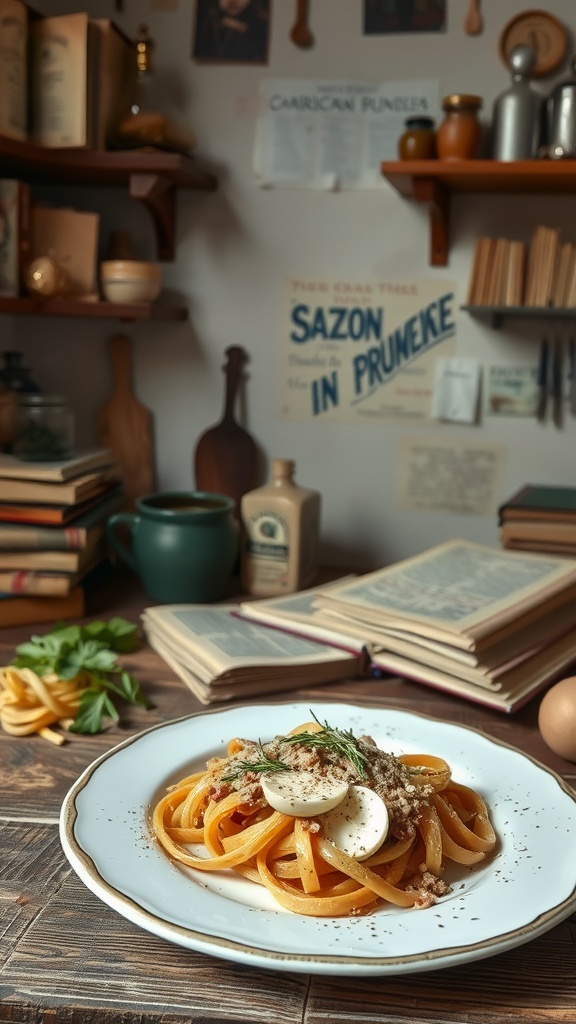
Carbonara is a dish that stirs up many questions about its beginnings. This classic Italian pasta is a favorite for many. It’s simple yet rich, with flavors that can transport you right to a cozy Roman trattoria.
The image shows a beautiful plate of carbonara, steaming and inviting. The pasta is perfectly twirled, topped with a sprinkle of cheese and pepper. You can see the rich sauce clinging to each strand. Surrounding the plate are books and kitchen tools, hinting at a warm, homey atmosphere where this dish might be enjoyed.
The debate on where carbonara originated is lively. Some say it comes from the Apennine mountains, while others believe it was born in Rome. Each story adds a layer to its mystery. What’s clear is that this dish combines just a few ingredients like eggs, cheese, guanciale, and pepper, yet creates a taste that feels grand.
Making carbonara at home is an enjoyable task. You’ll need spaghetti, egg yolks, grated Pecorino Romano cheese, crispy guanciale, and black pepper. Cook the pasta, fry the guanciale, and then mix everything quickly with the eggs to form a creamy sauce. Serve it immediately for that authentic touch!
Ingredients That Make Carbonara Shine
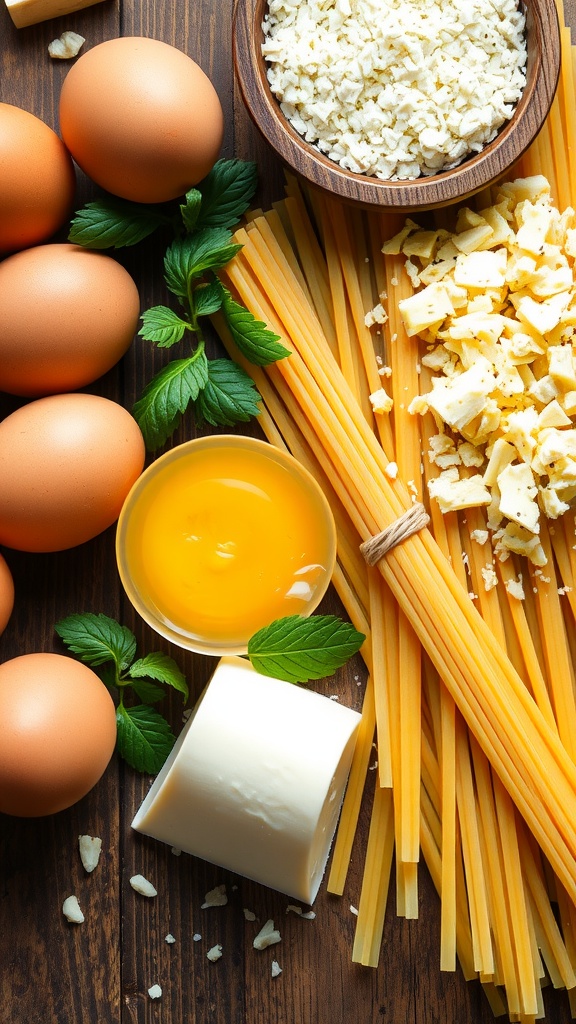
Carbonara is a classic Italian dish that captures the essence of comfort food. It’s all about simplicity and quality ingredients. The image beautifully showcases the main components you need to create this culinary delight: spaghetti, eggs, cheese, and fresh herbs.
The star of the show is the spaghetti, which forms the base of the dish. It should be cooked al dente, so it has a nice bite that pairs perfectly with the creamy sauce. The yellow hue of the pasta in the image hints at the freshness of the ingredients used.
Next, we have the eggs. The rich yolks add creaminess without needing cream at all. When mixed with the hot pasta, they create a luxurious sauce that clings to each strand. The vibrant yolks in the image promise a delightful taste.
Then there’s the cheese. A good quality Pecorino Romano or Parmesan is essential. Its salty and nutty flavors heighten the dish and balance the richness of the eggs. The block of cheese in the picture is a reminder to use fresh, finely grated cheese for the best results.
Lastly, the fresh herbs, like parsley or mint, bring a pop of color and freshness. They brighten up the dish and enhance the overall flavor profile. Just a sprinkle makes a world of difference.
With these ingredients, you’re set to make an authentic Carbonara that transports you straight to Italy with every bite.
Emotional Connections: Food and Memory in Italy
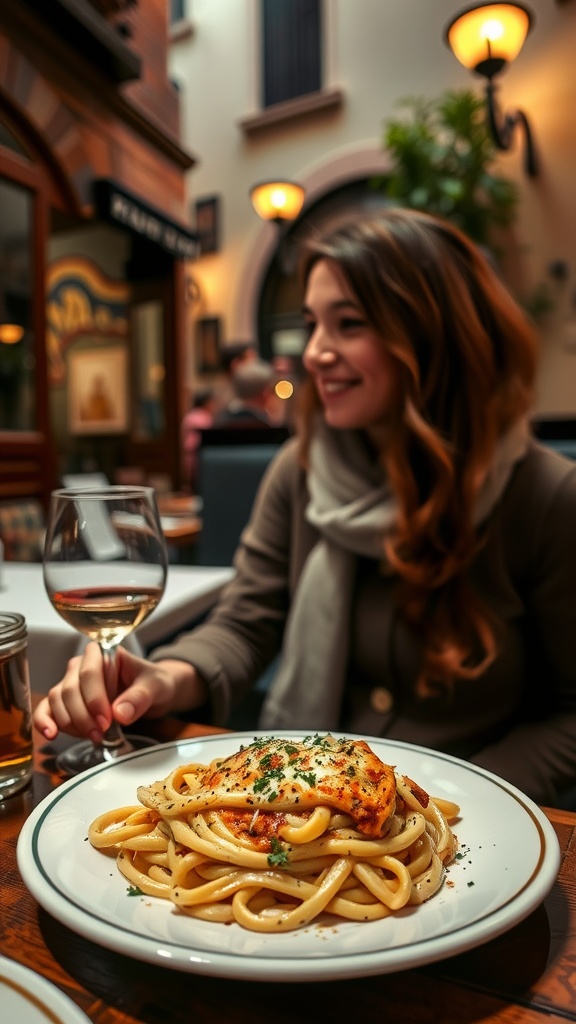
In the heart of Italy, food does more than just fill your stomach; it stirs memories. The image of a perfectly plated pasta carbonara, rich and creamy, brings to mind family gatherings and laughter. Each swirl of pasta is like a thread connecting us to moments shared around the table.
This dish, often made with simple ingredients such as spaghetti, eggs, cheese, guanciale, and black pepper, speaks volumes about tradition. As someone twirls the pasta onto their fork, they might recall the aroma of a loved one’s kitchen or the joy of sharing a meal with friends. It’s these simple acts that create lasting impressions.
The setting adds to the experience. A restaurant filled with warm lighting and rustic decor, framed by memories on the walls, invites you to slow down and savor each bite. Each meal becomes a celebration of life, reminding us of times gone by.
Food in Italy is about connection, not just to the dish but to the people we cherish. The act of sharing a meal becomes a story of love, laughter, and nostalgia. When you find yourself lost in a plate of carbonara, you’re actually finding yourself in the rich tapestry of Italy’s culinary history.
Mastering the Art of Carbonara Preparation
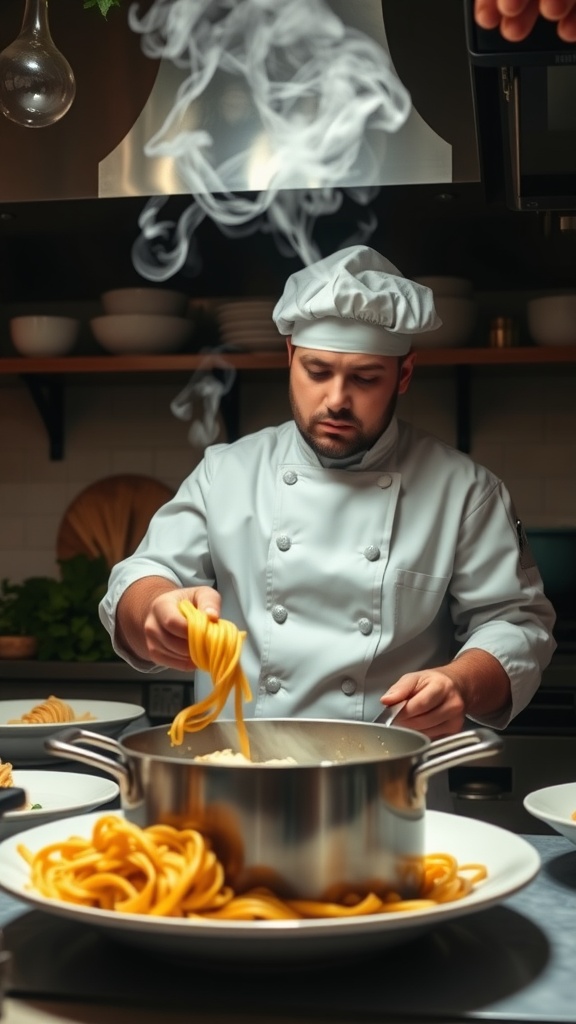
Creamy, rich, and utterly satisfying, carbonara is a classic Italian dish that warms the soul. When you look at the image of the chef in a busy kitchen, you see the dedication that goes into each plate of this beloved pasta. The steam rising from the pot hints at the magic happening inside.
The key to great carbonara starts with quality ingredients. You need spaghetti, eggs, Pecorino Romano cheese, guanciale, and black pepper. Each of these components plays a vital role in creating that perfect flavor balance.
Begin by cooking the spaghetti in salted water until it’s al dente. Meanwhile, in a separate pan, sauté the guanciale until crispy. The image captures this moment perfectly, with the chef skillfully managing the pasta and the guanciale. Once the pasta is ready, combine it with the guanciale and remove it from the heat.
Now comes the fun part. In a bowl, whisk together the eggs and grated cheese. The residual heat from the spaghetti will gently cook the eggs as you mix them in. This is where the creaminess comes from. The chef’s focus in the image shows how important this step is for the final texture.
Finish with a generous sprinkle of black pepper and enjoy. Each bite should transport you to a cozy trattoria in Rome, just like getting lost in the heart of Italy. So, grab your ingredients, channel your inner chef, and get cooking!


